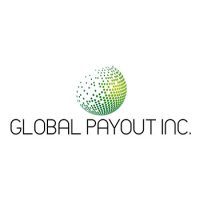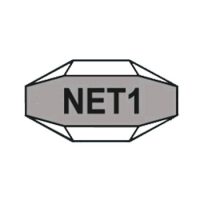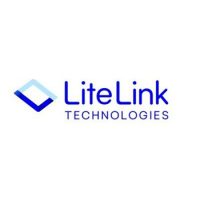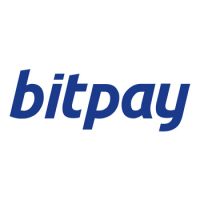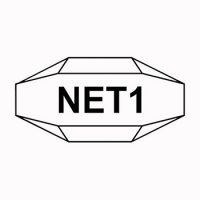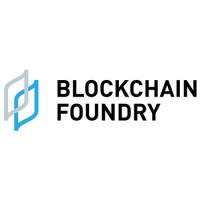Blockchain
RETRANSMISSION: HIVE Blockchain Provides January 2023 Production Update and Bitcoin HODL Increase of 20% on Year-Over-Year Basis
This news release constitutes a “designated news release” for the purposes of the Company’s prospectus supplement dated September 2, 2022 to its amended and restated short form base shelf prospectus dated January 4, 2022.
Vancouver, British Columbia–(Newsfile Corp. – February 7, 2023) – HIVE Blockchain Technologies Ltd. (TSXV: HIVE) (Nasdaq: HIVE) (FSE: HBFA) (the “Company” or “HIVE”) is pleased to announce the production figures from the Company’s global Bitcoin operations for the month of January 2023, with 260 Bitcoin produced in January, plus USD $180,000 of income from grid balancing, and a current BTC HODL balance of approximately 2,430 Bitcoin mined with green energy, representing an approximate 20% year over year growth (2,043 Bitcoin HODL in Jan 2022). The Company notes its year over year monthly production in January 2023 is consistent, during a period where BTC mining difficulty has gone up approximately 60%. Additionally, HIVE does not have any equipment financing or BTC backed loans.
Figure 2
To view an enhanced version of this graphic, please visit:
https://images.newsfilecorp.com/files/5335/153905_4c59a4c5c46d1951_002full.jpg
Summary Overview:
- HIVE produced 260 Bitcoin in the month of January, from ASIC and GPU mining operations, representing an average of 110 Bitcoin Per Exahash. A 21% month over month increase, compared to December 2022 (214 Bitcoin produced).
- HIVE’s year over year monthly Bitcoin production was consistent (260 Bitcoin in January 2023 and 264 Bitcoin in January 2022), during a period where the Bitcoin network difficulty increased approximately 60%.
- HIVE earned USD $180,000 in income from balancing the grid, in addition to Bitcoin produced in January. Based on the daily Bitcoin prices during the month of January, the income from grid balancing would equate to a mined value of 10 Bitcoin.
- HIVE deployed over 6,700 new generation ASIC miners in its data centers, representing one of the largest upgrades in the Company’s history, to improve our gross mining margin and fleet efficiency.
- HIVE has deployed over 3,200 BuzzMiners in its facilities in Sweden and Canada. These miners are from the 5,655 BuzzMiners manufactured, tested, and received to date.
- HIVE has fully deployed all the 3,570 S19j Pro miners acquired in December 2022 into our New Brunswick and Lachute facilities. As a result of in-house software improvements by HIVE’s technical team, we further increased our efficiency at our New Brunswick site by approximately 20% in average J/TH efficiency.
- HIVE expects to receive an additional 645 BuzzMiners in the next 2 months, representing a total production quantity of 6,300 BuzzMiners powered by the Intel Blockscale ASIC for the initial production run. HIVE is the first company in the world to commercially deploy thousands of its own Bitcoin ASIC miners powered by the Intel Blockscale ASIC.
- HIVE sells all of the Bitcoin earned from our GPU mining hashrate, with a focus to HODL the green Bitcoin mined from ASICs.
January 2023 Production Figures
Frank Holmes, Executive Chairman of HIVE stated, “We are very happy to have overcome several big headwinds over the past year such has Bitcoin prices falling 50%, the Global Difficulty surging 50% which means fewer coins mined unless you increase both the efficiency of ASIC chips and number of machines mining which HIVE has done. Even with huge headwinds like the FTX bankruptcy and contagion, the HIVE management team has stayed focused and increased its BTC production and our HODL Bitcoin position. Further we have pivoted with our GPU chips away from Ethereum after the Merge and are using Ai to mine alternative coins and convert into Bitcoin, thus we are able to generate Bitcoin revenue. We have decided to sell the BTC earned using GPU/Ai and strive to HODL our Bitcoins created from hydro and geothermal electricity. We have not been using our ATM since November 30, 2022, and have been able to create other sources of revenue from balancing the grid to selling back energy while deploying the new Intel BuzzMiners and purchased other highly efficient ASIC machines from internal cash management. Our financial success has been from our company’s values, culture, and strategy to have propriety software and strong global partnerships. Finally and fortunately we never borrowed at predatory 12-18% interest rates or kept our Bitcoin in crypto exchanges and I am very proud of the team’s agility to adapt thoughtfully and quickly to the many external crisis’s through the crypto winter bear market of 2022.”
Aydin Kilic, President & CEO of HIVE noted “We are proud to be producing 260 Bitcoin while also earning over USD $180,000 this month from our grid balancing initiatives. Our team has deployed over 6,700 ASIC miners in our data centers, including over 3,200 HIVE BuzzMiners, powered by the Intel Blockscale ASIC and all of the 3,570 S19j Pros we acquired in December 2022. HIVE was the first public crypto mining company to realize income from its grid balancing program in Sweden. We view grid balancing as part of our core strategy, and whenever possible, we seek to hedge energy prices.”
Mr. Kilic continued, “We have increased our overall hashrate by 25% month over month from December 2022 to January 2023. We are continuously looking to optimize our allocation of energy as a resource, either to generate hashrate or sell energy back to the grid. Moreover, if unhedged spot prices are uneconomical in a specific jurisdiction, we quickly scale down our production. Additionally, our remaining GPU fleet is now generating approximately USD $80/MWHR in revenue, which is similar to the USD $/MWHR compared to Bitcoin ASIC miners in the current Bitcoin mining economics. We are constantly optimizing the deployment of our technology resources as a company to optimize profit. These advancements and agility allow us to generate positive gross mining margin during a crypto mining bear market. With a strong balance sheet of over USD $56 million of Bitcoin, HIVE is well positioned in the market today.”
The Company’s total Bitcoin production in January 2023 was:
- 260 BTC produced;
- 8.4 BTC produced per day on average;
- 2.68 Exahash of BTC Hashrate (BTC ASIC hashrate plus BTC GPU Hashrate) as of January 31, 2023 comprised of 2.52 Exahash of ASIC BTC hashrate and 0.16 Exahash of GPU BTC Hashrate (the GPU fleet was curtailed to earn income for grid balancing) as of January 31st; and
- Monthly average of 2.37 Exahash, which is equal to 110 Bitcoin per Exahash, comprised of an average of 2.28 Exahash of ASIC mining capacity and an average of 90 PH/s of Bitcoin GPU mining capacity during the month.
Bitcoin HODL Update
As of the date of this press release, HIVE has approximately 2,430 Bitcoin, with a market value of over USD $56 million.
Bitcoin Global Network Mining Difficulty Is Volatile
Network difficulty factors are a significant variable in the Company’s gross profit margins. The Bitcoin network difficulty was 34.1T as at January 1, 2023 and increased to 39.4T as at January 31, 2023. Accordingly, Bitcoin mining difficulty ended the month about 15% higher than the beginning of the month.
The Bitcoin Network Difficulty is a publicly available statistic, that reflects the total number of Bitcoin miners online and is important in analyzing a company’s gross profit margins, and number of Bitcoin produced. This data is available on many websites, here is one citation: https://www.blockchain.com/explorer/charts/difficulty
As more people mine Bitcoin (difficulty increases), the daily Bitcoin block reward which presently is fixed at 900 Bitcoin per day, gets split amongst more miners; thus each miner receives a smaller portion of the block reward. Conversely, as Bitcoin prices fall, many miners may lose money, and power down, thus taking their hashrate off the network, causing Network Difficulty to decrease.
Those miners with the lowest costs of production; by virtue of having more efficient machines and/or lower energy costs, are able to continue their production during these volatile cycles. Not all miners will continuously mine during a given month. As a result, some miners will produce less Bitcoin than expected, relative to their advertised hashrate. For the foregoing reasons, HIVE will self-curtail part of its operations if the unhedged spot energy prices are uneconomical, thereby leaving part of its total gross hashrate unutilized.
All Bitcoin miners are striving to use the most efficient Bitcoin ASIC chips, and we are happy that we have been able to upgrade our global fleet during this crypto market downturn.
ATM Equity Program Update
Effective as of the date hereof, the Company has terminated its at-the-market equity distribution agreement under which the Company had the option to sell up to USD $100 million of common shares of the Company at its discretion (the “ATM Equity Program”). The Company did not offer any shares under the ATM Equity Program after November 30, 2022. From inception of the ATM Equity Program to November 30, 2022, the Company issued 1,306,474 common shares (the “ATM Shares”) for gross proceeds of USD $3,941,736. The ATM Shares were sold at prevailing market prices. A cash commission of USD $118,252 on aggregate gross proceeds from the ATM Equity Program was paid to the Company’s sales agent.
About HIVE Blockchain Technologies Ltd.
HIVE Blockchain Technologies Ltd. went public in 2017 as the first cryptocurrency mining company with a green energy and ESG strategy.
HIVE is a growth-oriented technology stock in the emergent blockchain industry. As a company whose shares trade on a major stock exchange, we are building a bridge between the digital currency and blockchain sector and traditional capital markets. HIVE owns state-of-the-art, green energy-powered data centre facilities in Canada, Sweden, and Iceland, where we endeavour to source green energy to mine digital assets such as Bitcoin on the cloud. Since the beginning of 2021, HIVE has held in secure storage the majority of its treasury of ETH and BTC derived from mining rewards. Our shares provide investors with exposure to the operating margins of digital currency mining, as well as a portfolio of Bitcoin. Because HIVE also owns hard assets such as data centers and advanced multi-use servers, we believe our shares offer investors an attractive way to gain exposure to the cryptocurrency space.
We encourage you to visit HIVE’s YouTube channel here to learn more about HIVE.
For more information and to register to HIVE’s mailing list, please visit www.HIVEblockchain.com. Follow @HIVEblockchain on Twitter and subscribe to HIVE’s YouTube channel.
On Behalf of HIVE Blockchain Technologies Ltd.
“Frank Holmes”
Executive Chairman
For further information please contact:
Frank Holmes
Tel: (604) 664-1078
Neither the TSX Venture Exchange nor its Regulation Services Provider (as that term is defined in policies of the TSX Venture Exchange) accepts responsibility for the adequacy or accuracy of this news release.
Forward-Looking Information
Except for the statements of historical fact, this news release contains “forward-looking information” within the meaning of the applicable Canadian securities legislation that is based on expectations, estimates and projections as at the date of this news release. “Forward-looking information” in this news release includes, but is not limited to, business goals and objectives of the Company; the results of operations for January 2023; the HODL strategy adopted by the Company; the acquisition, deployment and optimization of the mining fleet and equipment; the continued viability of its existing Bitcoin mining operations; the results of the ATM Equity Program, and other forward-looking information concerning the intentions, plans and future actions of the parties to the transactions described herein and the terms thereon.
Factors that could cause actual results to differ materially from those described in such forward-looking information include, but are not limited to, the volatility of the digital currency market; the Company’s ability to successfully mine digital currency; the Company may not be able to profitably liquidate its current digital currency inventory as required, or at all; a material decline in digital currency prices may have a significant negative impact on the Company’s operations; the volatility of digital currency prices; continued effects of the COVID-19 pandemic may have a material adverse effect on the Company’s performance as supply chains are disrupted and prevent the Company from carrying out its expansion plans or operating its assets; and other related risks as more fully set out in the registration statement of Company and other documents disclosed under the Company’s filings at www.sec.gov/EDGAR and www.sedar.com.
The forward-looking information in this news release reflects the current expectations, assumptions and/or beliefs of the Company based on information currently available to the Company. In connection with the forward-looking information contained in this news release, the Company has made assumptions about the Company’s objectives, goals or future plans, the timing thereof and related matters. The Company has also assumed that no significant events occur outside of the Company’s normal course of business. Although the Company believes that the assumptions inherent in the forward-looking information are reasonable, forward-looking information is not a guarantee of future performance and accordingly undue reliance should not be put on such information due to the inherent uncertainty therein. The Company disclaims any intention or obligation to update or revise any forward-looking information, whether as a result of new information, future events or otherwise, other than as required by law.
Blockchain
EAT & BEYOND ANNOUNCES PROPOSED NAME CHANGE AND UPDATED INVESTMENT POLICY
Blockchain
Blocks & Headlines: Today in Blockchain – May 30, 2025 (Fraser Edwards, Kyiv NFT, Spirit Blockchain Capital, Indian eHealth, Hedera)

Blockchain technology and cryptocurrencies continue to redefine industries—from competitive gaming and cultural heritage preservation to corporate finance, healthcare, and alternative tokens. Today’s briefing highlights five pivotal developments shaping the ecosystem: Fraser Edwards’s vision for trust in eSports; Ukraine’s wartime cultural preservation via NFTs; Spirit Blockchain Capital’s Q1 2025 operational report; India’s push for blockchain-enabled electronic health records (EHRs); and the rise of viral altcoins such as UniLabs, Sui, and Hedera Hashgraph. Together, these stories illustrate the themes of trust and identity, preservation and provenance, institutional maturation, public-sector innovation, and token diversification. In this op-ed–style round-up, we distill the essence of each story, cite sources, and offer analysis on how they advance Web3, DeFi, and NFT frontiers.
1. Rebuilding Trust in eSports: Can Blockchain Fix Competitive Integrity?
Source: CCN
Summary:
In a recent CCN interview, veteran trader and eSports investor Fraser Edwards argues that blockchain’s immutable ledgers can restore credibility in the rapidly commercializing world of competitive gaming. According to Edwards, match-fixing scandals and opaque prize-pool distributions have eroded fan confidence. By tokenizing tournament entries and payouts on public blockchains—complete with smart-contract–enforced escrow—organizers can guarantee that prize monies are distributed exactly as advertised, and that no post-match manipulation occurs. Tournament operators in Asia and North America are already piloting Ethereum-based payout dApps, aiming to increase transparency for players and sponsors alike.
Key details & analysis:
-
Smart-contract escrow: Funds are held in a time-locked contract that releases prize money only upon verifiable match results. This prevents disputes over referee decisions or delayed payments.
-
On-chain reputation: Player and team reputations can be tokenized via non-fungible reputation badges that accrue based on fair play and community votes—discouraging cheating.
-
Scalability concerns: High-traffic tournaments may require Layer 2 rollups or alternative chains (e.g., Polygon, Immutable X) to reduce gas costs and latency.
Opinion: Blockchain’s dual promise of provable fairness and programmable finance makes it uniquely suited to eSports. Yet adoption hinges on UX: seamless wallet integrations, minimal transaction fees, and clear regulatory guidance on esports tokens.
2. When Art Meets Blockchain: Ukraine’s Wartime Cultural Preservation
Source: The Kyiv Independent
Summary:
As monuments crumble under artillery fire, Ukrainian curators and technologists are partnering to mint NFTs representing lost or endangered artifacts. The Kyiv Independent reports that the National Art Museum of Ukraine has launched “Project Phoenix,” tokenizing high-resolution 3D scans of sculptures, manuscripts, and paintings. Proceeds from initial sales fund restoration and digital archiving efforts. Each NFT embeds provenance metadata—including GPS coordinates, curator notes, and condition reports—ensuring that future generations can verify authenticity and context, even if the physical artifact is destroyed.
Key details & analysis:
-
Metadata richness: Beyond simple ownership, NFTs store structured metadata—using ERC-721 metadata extensions—that capture curatorial insights and conservation logs.
-
Decentralized archives: IPFS and Arweave are employed to host ultra-high-resolution imagery, with on-chain hashes guaranteeing data integrity.
-
Community engagement: Fractional-NFT drops allow diaspora communities to collectively own tokens, strengthening cultural ties and crowdfunding preservation.
Opinion: Blockchain’s ability to immutable record heritage provides a lifeline for war-torn nations. However, ensuring that local institutions retain governance over metadata edits and future migrations is critical to avoiding “cultural colonialism” by global NFT marketplaces.
3. Spirit Blockchain Capital’s Q1 2025 Highlights: Growth, Investments, and Outlook
Source: GlobeNewswire
Summary:
Spirit Blockchain Capital’s Q1 2025 report benchmarks the firm’s operational milestones and financial performance. Assets under management (AUM) climbed 45% to $1.02 billion, driven by strategic allocations to top-tier Layer 1 and Layer 2 protocols, DeFi liquidity pools, and a newly launched token-index fund. Operating income rose 37%, fueled by management fees and performance incentives. The firm also closed its second blockchain-focused venture fund at $150 million, earmarked for early-stage Web3 projects in gaming, infrastructure, and decentralized identity.
Key details & analysis:
-
Diversification strategy: 60% of AUM in blue-chip cryptocurrencies (Bitcoin, Ethereum); 25% in DeFi (Aave, Uniswap, Lido); 15% in tokenized commodities and NFTs.
-
Fund performance: The flagship fund delivered a 9.8% return in Q1, outperforming the 6.2% benchmark set by the Bloomberg Galaxy Crypto Index.
-
Venture investments: Early stakes in zero-knowledge proof startups and decentralized storage platforms signal confidence in scalability and privacy innovations.
Opinion: Spirit’s robust growth and disciplined diversification mirror institutional maturation in the blockchain asset management space. As regulatory clarity improves, expect further inflows from endowments, pensions, and family offices.
4. Blockchain EHRs in India: The Next Digital Health Revolution
Source: ORF
Summary:
The Observer Research Foundation (ORF) details India’s pioneering pilot of blockchain-backed electronic health records (EHRs) in the state of Andhra Pradesh. By leveraging a permissioned Hyperledger Fabric network, the initiative ensures that patient records—from vaccination histories to diagnostic imaging—are securely shared across hospitals, clinics, and pharmacies. Patients control access via digital identities anchored to India’s Aadhaar system, granting temporal permissions for data viewing and preventing unauthorized sharing.
Key details & analysis:
-
Interoperability: HL7 FHIR standards are mapped to on-chain transactions, enabling seamless data exchange with existing hospital information systems (HIS).
-
Privacy safeguards: Off-chain storage of PHI (Protected Health Information) is encrypted with patient-held keys; only hashed pointers reside on-chain to ensure immutability without exposing sensitive data.
-
Regulatory alignment: The pilot aligns with India’s draft Digital Health Act, which emphasizes data sovereignty and patient consent frameworks.
Opinion: Blockchain EHRs can democratize healthcare access in a populous nation—but success depends on user-friendly portals, robust identity verification, and contingency plans for network outages in rural areas.
5. The Hottest Viral Altcoins of 2025: UniLabs, Sui, and Hedera Lead the Pack
Source: TronWeekly
Summary:
According to TronWeekly, the altcoin landscape in 2025 is dominated by three viral tokens: UniLabs (UNI-L), Sui (SUI), and Hedera Hashgraph (HBAR). UniLabs, a governance token for a decentralized laboratory network, saw a 1,200% year-to-date surge on news of its AI-driven drug-discovery partnership. Sui’s Move-based smart-contract platform gained traction for sub-second finality and low gas fees, with total value locked (TVL) surpassing $2 billion. Hedera’s HBAR continues its enterprise pivot, securing multi-year agreements with global brands for identity verification and supply-chain tracking.
Key details & analysis:
-
UniLabs use case: Token holders vote on research grants and share in royalty revenues from patented compounds developed on-chain.
-
Sui performance: With a novel object model and horizontal sharding, Sui supports over 3,000 TPS (transactions per second) without compromising on decentralization.
-
Hedera enterprise: The Governing Council—comprising Boeing, Google, and LG—bolsters confidence in HBAR’s governance model and paves the way for compliant enterprise deployments.
Opinion: These tokens exemplify the diversification of blockchain applications. Investors should assess not only market hype but also protocol fundamentals—developer activity, economic incentives, and real-world adoption.
Cross-Story Trends & Key Takeaways
-
Trust & Transparency at the Core
From esports prize-pool ledgers to wartime NFT archives and permissioned health records, blockchain’s immutability fosters verifiable trust—a prerequisite for mainstream adoption across sectors. -
Institutional & Public-Sector Innovation
Spirit Blockchain Capital’s fund growth and India’s EHR pilot signal that both private and government entities view blockchain as a strategic infrastructure, not just speculative assets. -
Vertical Specialization Fuels Token Growth
Viral altcoins like UniLabs, Sui, and Hedera thrive by addressing niche use-cases—governance in biotech, scalable DeFi rails, and enterprise identity—underscoring the importance of purpose-built protocols. -
Metadata & Provenance Drive NFTs Beyond Art
Ukraine’s cultural NFTs demonstrate how rich on-chain metadata can preserve heritage, while esports applications show that reputation tokens can enforce fair-play credentials. -
Ecosystem Maturation Requires UX & Governance
Across all stories, user experience—wallet onboarding, identity verification, metadata curation—and robust governance frameworks (tokenomics, regulatory alignment) emerge as decisive factors in blockchain’s next wave.
Conclusion
Today’s blockchain headlines reveal a maturing ecosystem where trust, transparency, and targeted innovation unlock new frontiers—from safeguarding digital heritage amid conflict to revolutionizing healthcare and sports. As institutional players allocate billions, and public-sector pilots chart regulatory pathways, the fate of tomorrow’s Web3 landscape hinges on seamless UX, rigorous governance, and demonstrable real-world utility. Stay tuned for tomorrow’s Blocks & Headlines, where we’ll continue tracking the trends, tokens, and technologies that define the blockchain revolution.
The post Blocks & Headlines: Today in Blockchain – May 30, 2025 (Fraser Edwards, Kyiv NFT, Spirit Blockchain Capital, Indian eHealth, Hedera) appeared first on News, Events, Advertising Options.
Blockchain
Kyrgyz Republic to launch USDKG, a gold-backed stablecoin pegged to the U.S. Dollar, in Q3 2025

USDKG
-

 Blockchain Press Releases3 days ago
Blockchain Press Releases3 days agoRain Expands Support to Solana, Tron, and Stellar, Enabling More Partners to Launch Stablecoin-powered Card Programs
-

 Blockchain Press Releases3 days ago
Blockchain Press Releases3 days agoBybit Secures MiCAR License in Austria, Opens European Headquarters in Vienna with Strategic Expansion Plan
-

 Blockchain Press Releases5 days ago
Blockchain Press Releases5 days agoFlipster Reveals Middle East Expansion Plans and Appoints Regional Leadership to Bolster Crypto Trading
-

 Blockchain Press Releases5 days ago
Blockchain Press Releases5 days agoCoinW Teams Up with Superteam Europe to Conclude Solana Hackathon and Accelerate Web3 Innovation in Europe
-

 Blockchain3 days ago
Blockchain3 days agoBlocks & Headlines: Today in Blockchain – May 29, 2025 (Vaulta, Fosun, Signing Day Sports, Credit Unions, Gaming Innovations)
-

 Blockchain5 days ago
Blockchain5 days agoBlocks & Headlines: Today in Blockchain – May 27, 2025 Featuring Blockchain.com, Bilal Bin Saqib, XRP Ledger, Unstoppable Domains, ReNEW, MEXC Ventures
-

 Blockchain6 days ago
Blockchain6 days agoBlocks & Headlines: Today in Blockchain – May 26, 2025 (Lightchain AI, Cetus Hack, Bilal Bin Saqib, The Blockchain Group)
-

 Blockchain Press Releases7 days ago
Blockchain Press Releases7 days agoAB Charity Foundation X AB Blockchain Join Forces to Advance the Global “Tech for Good” Mission















